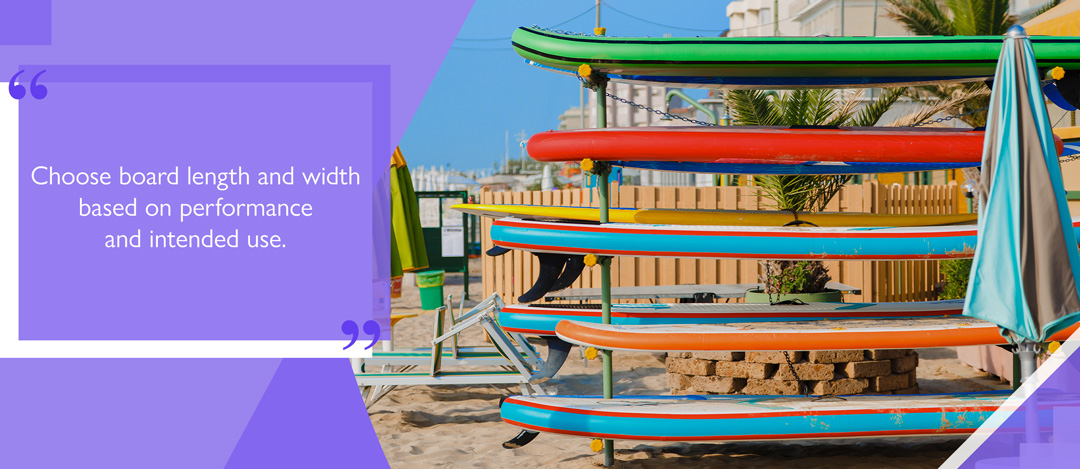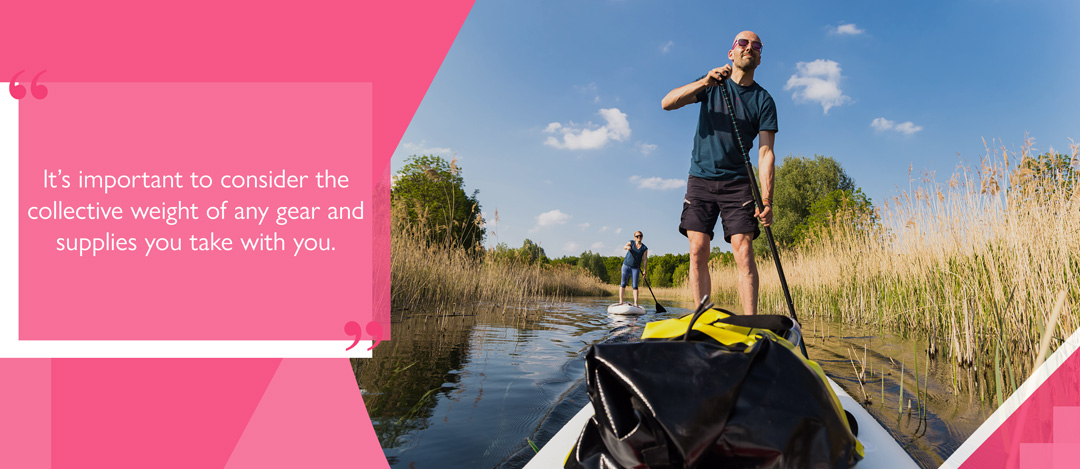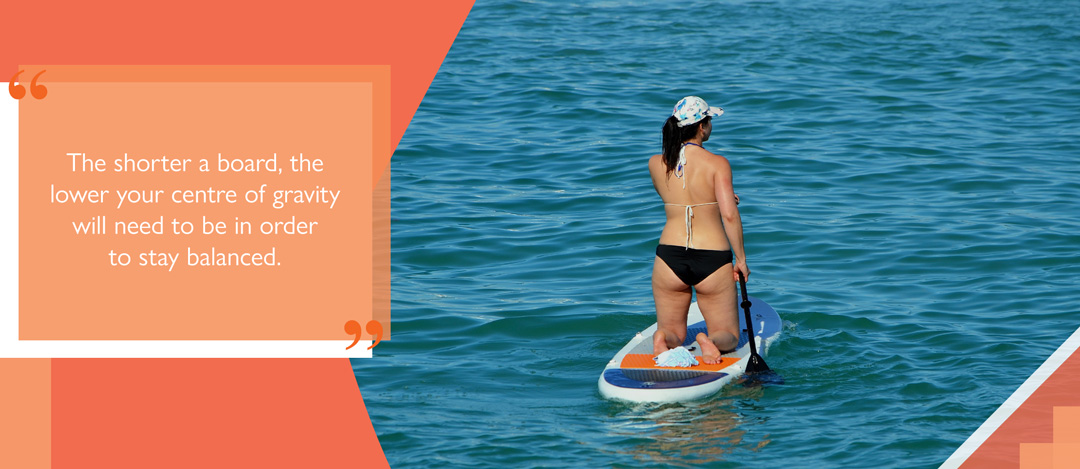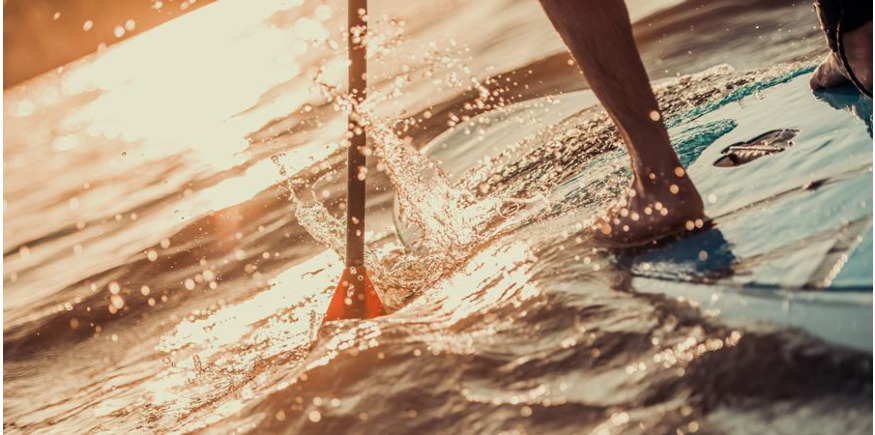How weight affects paddle boarding
It’s unlikely an inflatable paddle board will sink, no matter how overloaded. However, a SUP bearing too much weight will ride low in the water. This creates drag which leads to inefficient handling and instability.
Water displaces differently underneath an overloaded board. The extra weight can render fin set ups ineffectual, resulting in poor speed and unreliable straight-line tracking.
Being too light is much less common and less problematic, as boards are designed to float. A highly buoyant board could end up skimming the water if the rider is especially light, or paddling in rough conditions.
More often, the board will be unwieldy if it is too large, making paddling, balancing, and board control difficult.

Paddle board size guide
Heavier riders or those carrying lots of gear should look at boards which offer increased buoyancy. This will generally mean selecting a board with greater volume.
Often, it is the board’s thickness (depth) which provides the greatest variation in volume.
SUP weight limits
Of similar importance is the maximum recommended weight a SUP is rated to carry. This figure is referred to as the maximum payload: the total combined weight of humans and cargo that a board can carry while still moving efficiently through the water.
A typical all-round inflatable SUP, with a standard length and width of 10’6” and 33” and a depth of 4.75”, can carry an average maximum payload of 150kg.
A board one inch wider only affords an additional 5kg in weight, though the extra stability provided by added width may help.
An all-round XL board, with dimensions of 10’10” in length, and a depth of 6”, offers a maximum payload of up to 200kg with a 33” wide board, and 210kg at 34” in width.
Choose board length and width based on performance and intended use, using the depth measurement to gauge the level of buoyancy you can expect.

Carrying cargo and passengers
Besides the weight of your body, it’s important to consider the collective weight of any gear and supplies you take with you. Select a board with a payload appropriate for the maximum weight you’re likely to carry.
Touring SUPs are good for those who may sometimes carry heavier loads, but otherwise ride light. They tend to be thicker (i.e. offer increased buoyancy) but are perfectly balanced to handle well with a single rider.
Performance and build quality
Board thickness is important when selecting based on weight. However, other dimensions have a greater impact on handling.
Narrower boards tend to be less stable but more agile. Longer boards are harder to manoeuvre on turns, but faster and better at gliding.
The shorter a board, the lower your centre of gravity will need to be in order to stay balanced.
Build quality also impacts on weight bearing. Low-quality boards may hold less than expected due to air loss and poor tensile strength. High-quality construction stops boards bending or bowing.
Paddle boards and height
Riders who are light but tall will still have a higher centre of gravity, faring better on wider boards that provide greater stability.
For smaller riders, a low centre of gravity makes balancing on short boards easier. However, those who are heavier or bring lots of gear will still need to consider board volume to avoid riding low in the water.
Overall, weight is more important than height, but tall riders may find small boards make balancing more difficult.

Payload vs payoff
Taking weight into consideration is important for maximising the performance and enjoyment of your SUP. There’s little logic in choosing the best paddle board only to overload it and negatively impact performance.
Riders who know their boards will be loaded down should opt for SUPs with higher maximum payload ratings, like those offered by our 12’ Sport Air and 11’6” Entradia touring SUPs. Lighter riders who won’t carry heavy gear will benefit from shorter, narrower boards like the Sport Air 10’6”x33” allround.
At Two Bare Feet we focus on quality, so you can rely on the performance of the board you choose. All our inflatable SUPs are made with high-quality double-walled fabric, and drop-stitch technology ensures they stay rigid and robust, even at maximum payload.
For more information about boards and SUP performance, check out our blog. It contains a wealth of useful posts, ranging from general considerations such as how to pick a paddle board, to more technical aspects, like how SUP fin placement affects board performance.




